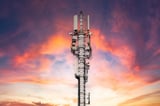UCL Breaks Wireless Speed Record with New Tech: 9,000 Times Faster Than 5G
October 16, 2024
The UCL team's technology allows for different transmission operations across various frequency ranges, significantly enhancing overall performance and capacity.
This advancement is particularly beneficial in crowded locations, such as concerts and sports events, where it can facilitate faster connections.
The UCL team is currently in discussions with smartphone manufacturers and network operators to integrate this technology into future 6G developments.
The new approach combines advanced electronics and photonics, enabling data transmission across a wide frequency range while maintaining high signal quality.
Although still in the laboratory phase, the technology is being developed into a prototype for commercial testing within the next five years.
Current 5G connections operate on congested narrow frequencies below 6 GHz, which limits speeds and contributes to slower wireless performance.
The research received support from the Engineering and Physical Sciences Research Council (EPSRC), highlighting its importance for the UK's communications infrastructure.
Such speeds are nearly 9,000 times faster than current 5G networks, which typically max out at around 20 gigabits per second.
University College London (UCL) has developed a groundbreaking wireless communication approach that integrates radio waves and light, achieving remarkable speeds nearing one terabit per second.
This innovative system set a new world record in wireless transmission, reaching peak speeds of 938 gigabits per second, which is approximately 30% faster than the previous record.
For practical context, this technology could download a 14GB 4K Ultra HD movie in just 0.14 seconds, a stark contrast to the 19 minutes required with standard 5G speeds.
The researchers utilized a frequency range from 5 gigahertz to 150 gigahertz, employing orthogonal frequency-division multiplexing (OFDM) to enhance data transmission rates.
Summary based on 7 sources
Get a daily email with more Tech stories
Sources

ScienceDaily • Oct 16, 2024
Engineers set new record on how fast data can be sent wirelessly
New Scientist • Oct 15, 2024
6G phone networks could be 9000 times faster than 5G
Live Science • Oct 17, 2024
Future 6G data speeds could hit 1 Tbps — up to 10,000 times faster than 5G — after transmission breakthrough
UCL News • Oct 16, 2024
UCL engineers set new record on how fast data can be sent wirelessly